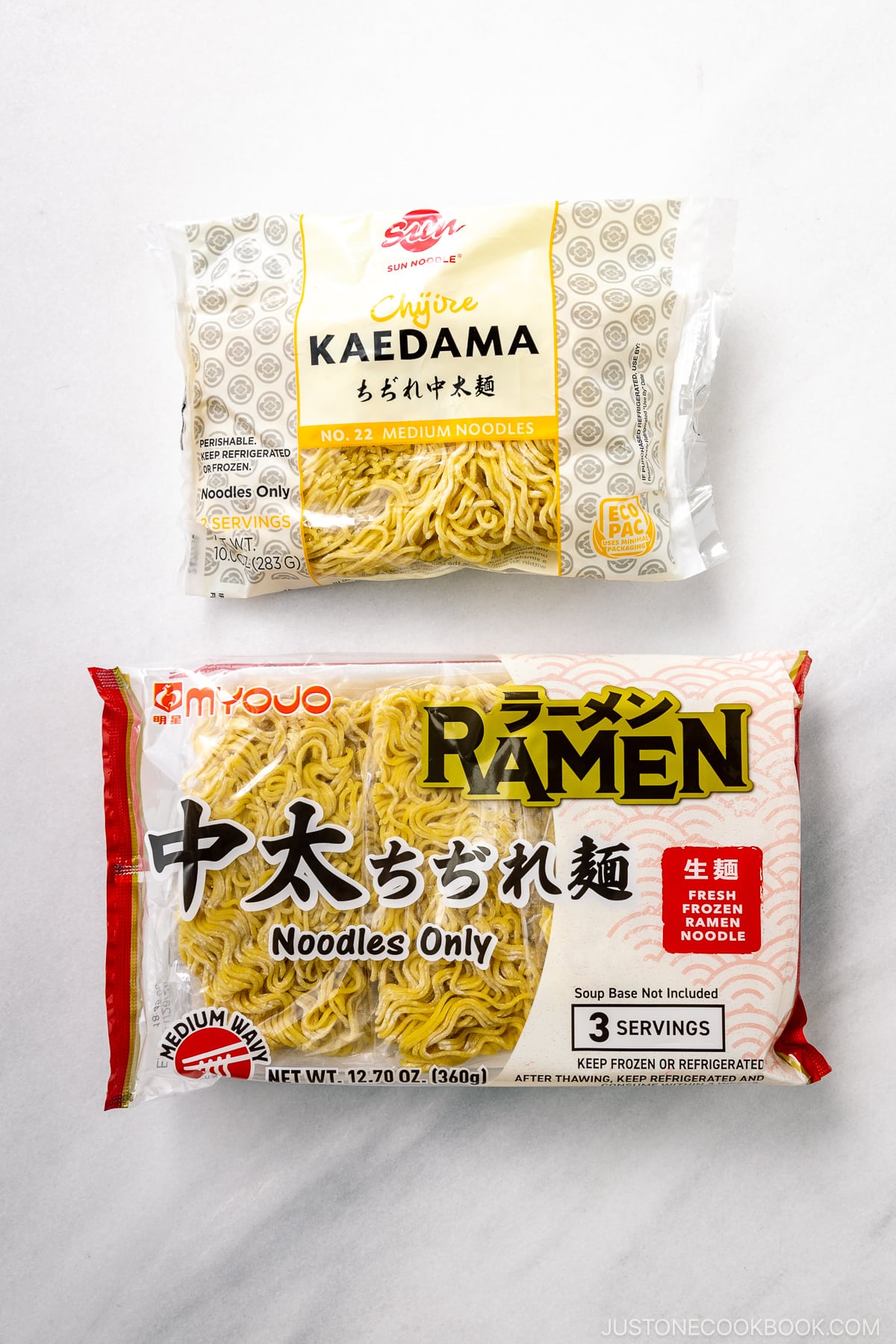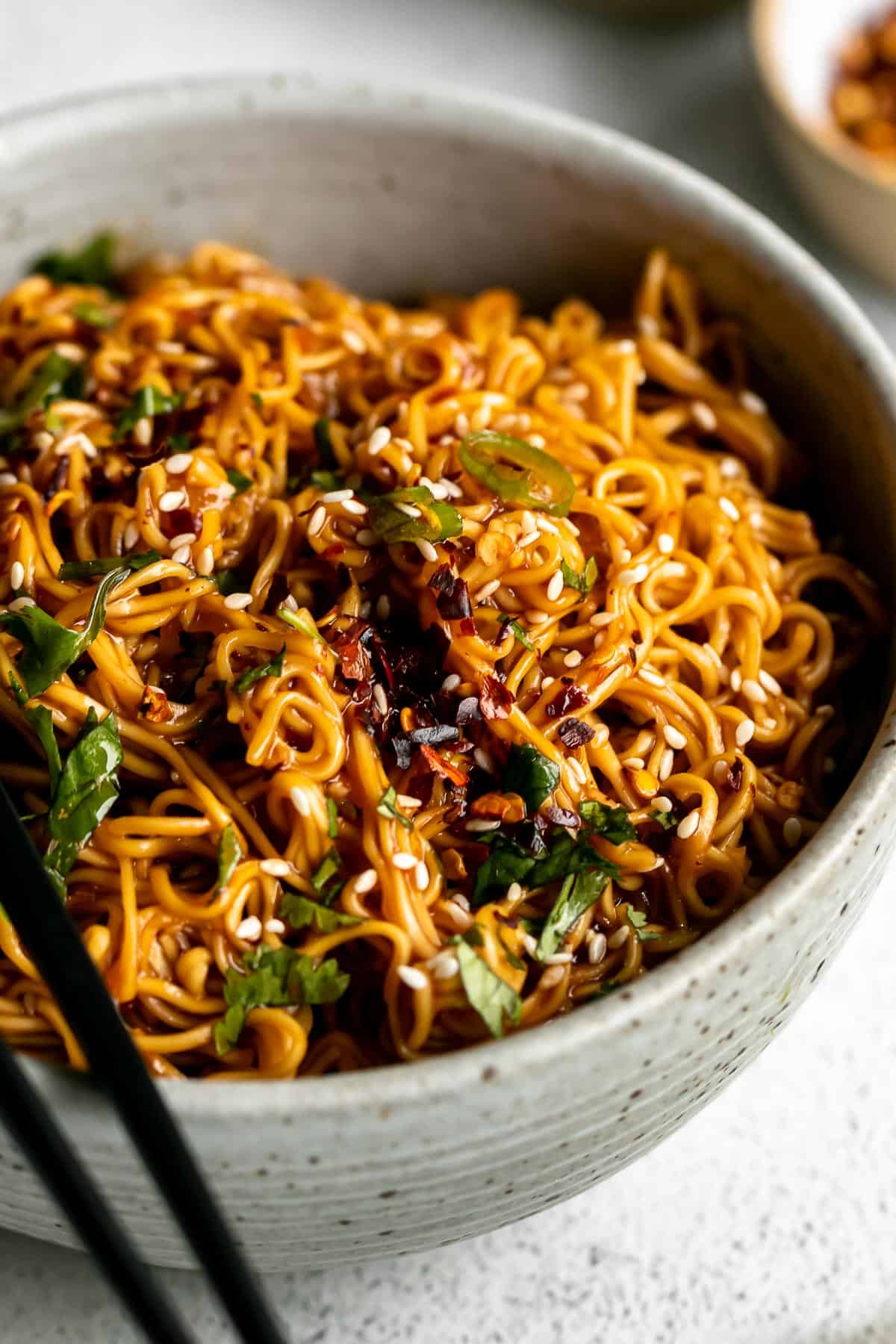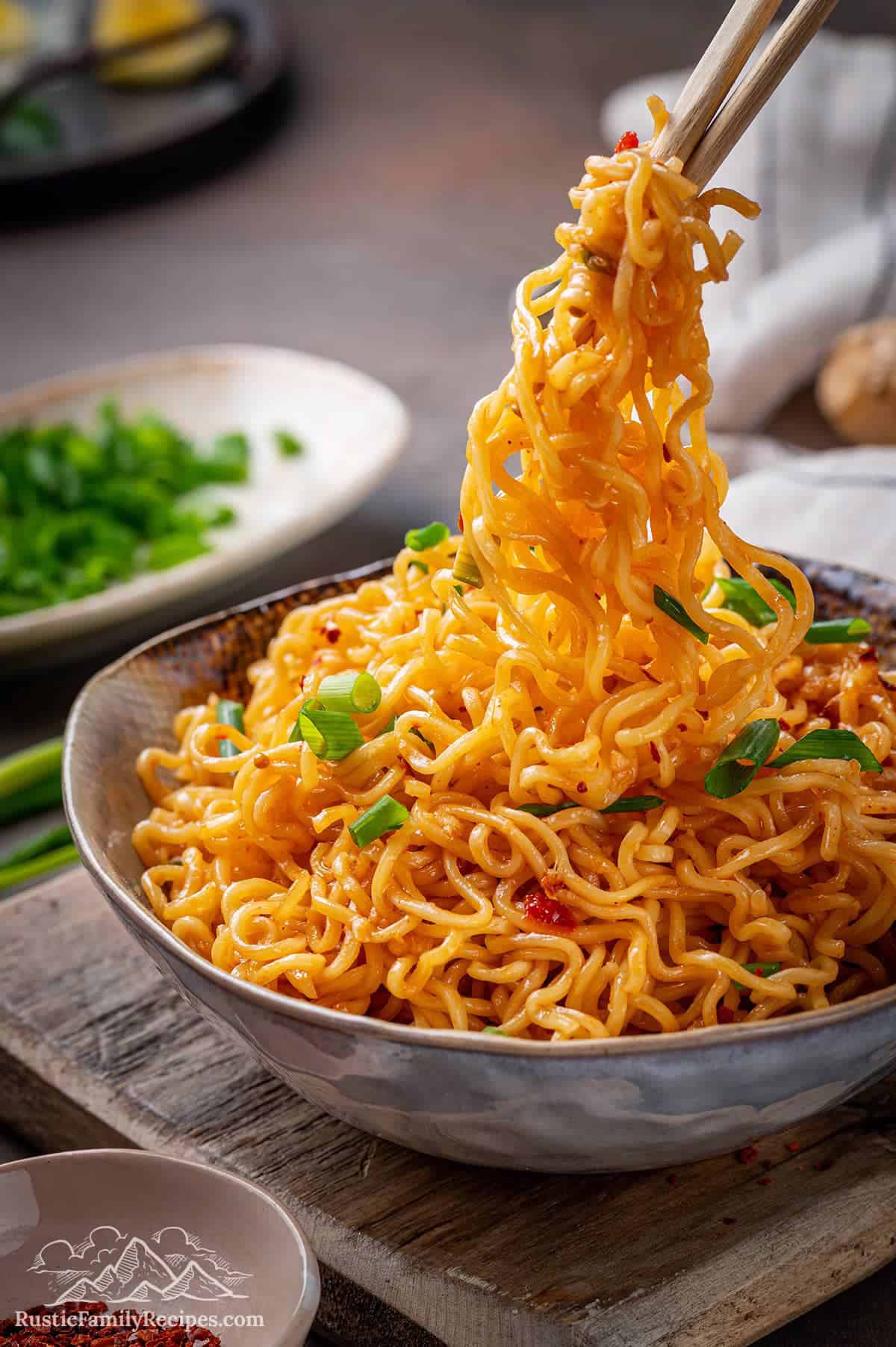Are you a ramen enthusiast? Think twice before slurping down that next bowl, as a recent multistate outbreak has linked certain instant ramen noodles to Salmonella contamination!
The term "CDC ramen noodles" has emerged to describe specific types of instant ramen noodles implicated in this alarming outbreak. The Centers for Disease Control and Prevention (CDC) is actively investigating the situation, focusing on a particular production facility in Ohio. Consequently, the CDC has issued a strong advisory urging consumers to refrain from consuming any ramen noodles originating from this facility.
Salmonella infection manifests through a range of unpleasant symptoms, including diarrhea, vomiting, fever, and abdominal cramps. In the most severe instances, the infection can escalate, requiring hospitalization and, tragically, potentially leading to death. Given the potential gravity of the situation, individuals who have consumed ramen noodles from the identified facility and are experiencing any of these symptoms should seek immediate medical attention.
- Why Velvet Lv Fabric Is A Gamechanger In The Fashion World
- Unstoppable Force Mariah Mills Wrestling Ndash The Rise Of A True Warrior
| Category | Information |
|---|---|
| Outbreak Timeline | Reported cases began in early June 2023, peaking in late June and early July. Investigation ongoing as of July 19, 2023. |
| Affected Product | Specifically, instant ramen noodles produced at a facility in Ohio. Brand names not explicitly specified but under investigation. |
| Reported Cases | 36 confirmed cases of Salmonella infection linked to the outbreak as of July 19, 2023. |
| Hospitalizations | 13 individuals hospitalized due to severe Salmonella infection. |
| Symptoms | Diarrhea, vomiting, fever, abdominal cramps, with potential for dehydration, sepsis, and organ failure in severe cases. |
| Prevention Measures | Avoid consuming ramen noodles from the implicated Ohio facility. Practice diligent handwashing, especially after handling food. |
| Treatment Protocols | Supportive care including rest, hydration, and pain relief. Antibiotics may be administered in severe cases or for high-risk individuals. |
| Recall Status | CDC has issued a recall for all ramen noodles produced at the implicated facility. Consumers are advised to discard or return the product for a refund. |
| Further Information | Visit the CDC website for the latest updates and detailed information. |
The shadow of this health crisis serves as a harsh reminder of the ever-present necessity for robust food safety protocols. Every consumer plays a vital role in mitigating risk diligent handwashing and vigilance in avoiding potentially contaminated foods are paramount. Should questions arise or concerns linger, the CDC's website stands as an invaluable resource, brimming with comprehensive information and guidance.
The "CDC ramen noodles" designation now carries a heavy weight, inextricably linked to a multistate outbreak of Salmonella, a severe public health challenge demanding immediate and sustained attention. Investigations have pinpointed a production hub in Ohio as the source, prompting the CDC's urgent plea to consumers: steer clear of ramen noodles stemming from this particular location.
- Outbreak: As of July 19, 2023, the CDC ramen noodles outbreak has led to 36 reported cases of Salmonella infection. Thirteen individuals have required hospitalization, underscoring the outbreak's severity.
- Symptoms: Keep a watchful eye for symptoms synonymous with Salmonella infection: diarrhea, vomiting, fever, and abdominal cramps. In severe cases, these symptoms can escalate, potentially leading to hospitalization or even fatal outcomes.
- Prevention: Proactive prevention is the best defense. Shun potentially tainted food, specifically ramen noodles from the suspect facility. Adopt rigorous handwashing practices, particularly after handling food items.
- Treatment: No definitive treatment exists for Salmonella infection. Instead, medical intervention is largely supportive, emphasizing rest, fluid replenishment, and, in some instances, antibiotic administration.
- Recall: The CDC's decisive action has resulted in a recall encompassing all ramen noodles manufactured at the implicated facility. Consumers are implored to discard or return these products to the point of purchase for a full refund.
This situation reinforces a fundamental truth: food safety is paramount. Consumers are urged to remain vigilant to scrub hands with diligence after handling any food and to vigilantly avoid products that carry a risk of contamination. If you seek clarification or further details regarding this outbreak, the CDC's website provides a wealth of reliable information.
- Kia Becht The Ultimate Guide To Understanding Everything About This Trending Topic
- Camirin Farmers The Unsung Heroes Of Sustainable Agriculture
The repercussions of the CDC ramen noodles outbreak serve as a stark reminder of the ever-present imperative of food safety. Each consumer must remain vigilant, adopting preventative measures to safeguard their health.
- Outbreak Investigation: The CDC's ongoing investigation has successfully traced the outbreak to an Ohio-based production facility. The agency has issued a clear warning, advising consumers to avoid ramen noodles originating from this source.
- Symptoms of Salmonella Infection: Familiarize yourself with the telltale signs of Salmonella infection, including diarrhea, vomiting, fever, and abdominal cramps. The infection can manifest with varying degrees of severity, sometimes culminating in hospitalization or death.
- Treatment for Salmonella Infection: Treatment focuses on supportive care, including rest, fluid rehydration, and potentially antibiotics, depending on the severity and individual risk factors.
- Prevention of Salmonella Infection: The cornerstone of prevention lies in avoiding potentially contaminated food. Steer clear of ramen noodles from the implicated facility and maintain scrupulous hand hygiene.
The CDC ramen noodles outbreak underscores the vulnerability of the food supply and the potential for widespread illness. As consumers, taking proactive steps to protect ourselves from Salmonella infection is non-negotiable. By adhering to the CDC's guidance and embracing sound food safety practices, we collectively contribute to mitigating the spread of foodborne illnesses.
Recognizing the early signs of Salmonella infection is paramount for timely intervention and preventing severe complications. Be alert for symptoms such as diarrhea, vomiting, fever, and abdominal cramps. In particularly vulnerable individuals or severe cases, the infection can lead to hospitalization and, in the most tragic instances, death.
Salmonella, a notorious bacterial culprit, frequently hides in contaminated food. Symptoms typically emerge between 12 and 72 hours following the consumption of tainted fare. While diarrhea, vomiting, fever, and abdominal cramps are the most common indicators, the infection can sometimes trigger more dire consequences, including dehydration, sepsis, and organ failure.
- Dehydration: The rapid fluid loss associated with diarrhea and vomiting can swiftly lead to dehydration, posing a significant threat, particularly to young children and the elderly.
- Sepsis: In severe cases, Salmonella can invade the bloodstream, precipitating sepsis, a life-threatening condition that can overwhelm the body and lead to organ failure and death.
- Organ failure: The infection can also exert its destructive force on vital organs, potentially leading to kidney or liver failure.
The specter of the CDC ramen noodles outbreak casts a long shadow, reminding us of the ever-present need for vigilance in food safety. As consumers, we must resolutely wash our hands, meticulously avoiding food that may harbor contamination. Should you have questions or concerns regarding this outbreak, the CDC's website stands as an invaluable source of information.
The most potent weapon in the arsenal against Salmonella infection is, without a doubt, prevention through the avoidance of contaminated food. With the CDC ramen noodles outbreak serving as a grim reminder, consumers must exercise caution and vigilance.
The CDC ramen noodles outbreak vividly illustrates the perils of foodborne illness and the ease with which Salmonella can infiltrate our food supply. The key lies in adopting proactive measures to minimize risk.
- Wash your hands thoroughly after handling food: This simple act forms a formidable barrier against bacterial transmission. Employ soap and water, scrubbing for at least 20 seconds, especially after bathroom visits, diaper changes, or contact with raw meat or poultry.
- Cook food to the proper temperature: Heat serves as a potent disinfectant, capable of eradicating Salmonella and other harmful bacteria. Employ a food thermometer to guarantee that food reaches a safe internal temperature.
- Avoid eating raw or undercooked food: Raw or undercooked fare can harbor lurking bacteria, including Salmonella. Exercise caution and avoid consuming raw or undercooked meat, poultry, seafood, or eggs.
- Store food properly: Proper storage thwarts bacterial growth. Keep perishable items refrigerated or frozen and promptly discard any food that shows signs of spoilage.
By embracing these preventative measures, you actively contribute to minimizing the risk of Salmonella infection and safeguarding public health.
Currently, no specific cure exists for Salmonella infection. Treatment primarily centers around supportive care, which encompasses rest, fluid replenishment, and the potential use of antibiotics, depending on the severity of the infection and individual patient factors.
The CDC ramen noodles outbreak underscores the critical importance of unwavering vigilance in food safety. Consumers must remain aware of the potential threats posed by foodborne illnesses and actively adopt strategies to mitigate risk. While no targeted treatment exists for Salmonella infection, prompt supportive care can significantly improve outcomes.
- Supportive care: Supportive care constitutes the cornerstone of Salmonella infection management, focusing on alleviating symptoms and preventing complications. Rest, fluid replenishment to combat dehydration, and pain relievers to manage discomfort are key components.
- Antibiotics: In severe cases or for individuals at heightened risk, antibiotics may be administered to combat the Salmonella bacteria.
While most individuals recover with supportive care, it's important to acknowledge that Salmonella infection can, in some instances, lead to severe complications, including dehydration, sepsis, or organ failure. These complications necessitate hospitalization and intensive medical intervention.
The CDC ramen noodles outbreak underscores the collective responsibility we share in maintaining food safety. By staying informed, adopting preventative measures, and seeking prompt medical attention when necessary, we can minimize the impact of foodborne illnesses and safeguard public health.
The CDC's swift action in issuing a recall for all ramen noodles originating from the affected facility underscores the agency's commitment to public safety. Consumers who have purchased these products are strongly advised to refrain from consumption and return them to the store for a full refund.
The CDC ramen noodles recall highlights the potential dangers lurking within our food supply. Salmonella, a common bacterial culprit, can trigger severe food poisoning, leading to a range of debilitating symptoms. Vigilance and responsible consumer behavior are crucial in mitigating risk.
- Public Health Risk: The CDC ramen noodles recall stems from a genuine public health risk. Salmonella infection can manifest in unpleasant symptoms, including diarrhea, vomiting, fever, and abdominal cramps. In the most severe cases, it can necessitate hospitalization and even prove fatal.
- Consumer Responsibility: Consumers bear a crucial responsibility in adhering to the CDC's guidance. Refraining from consuming the recalled ramen noodles and returning them to the store for a refund are essential steps in preventing further illness.
- Food Safety: This incident underscores the paramount importance of food safety at all levels of the supply chain. Consumers must be diligent in practicing safe food handling techniques.
- Government Oversight: The CDC's recall exemplifies the government's role in safeguarding public health. The agency actively investigates foodborne illness outbreaks and initiates recalls to remove contaminated products from circulation.
By embracing responsible food safety practices, adhering to public health advisories, and seeking timely medical attention when necessary, we can collectively minimize the impact of foodborne illnesses and protect the well-being of our communities.
The CDC ramen noodles recall underscores the ever-present risk of food contamination and the importance of proactive measures to safeguard public health. Salmonella, a common bacterial culprit, can trigger debilitating symptoms and, in severe cases, prove fatal.
Question 1: What are the symptoms of Salmonella infection?
Answer: Salmonella infection manifests through diarrhea, vomiting, fever, and abdominal cramps. In severe cases, it can lead to hospitalization and death.
Question 2: How can I prevent Salmonella infection?
Answer: Avoid potentially contaminated food, especially ramen noodles from the affected facility. Practice diligent handwashing.
Question 3: What should I do if I have eaten ramen noodles from the affected facility?
Answer: Seek immediate medical attention if you experience Salmonella infection symptoms.
Question 4: What is the CDC doing to address the outbreak?
Answer: The CDC is investigating the outbreak, issuing recalls, and collaborating with health departments to track cases.
Question 5: What is the government's role in protecting public health?
Answer: The government protects public health by investigating outbreaks and issuing recalls of contaminated food products.
Question 6: What can consumers do to protect themselves from foodborne illness?
Answer: Practice good food safety habits, including handwashing, cooking food to the proper temperature, and avoiding raw or undercooked food.
The CDC ramen noodles recall serves as a powerful reminder of the potential dangers lurking within our food supply. Proactive measures, including avoiding recalled products and practicing diligent food safety habits, are essential for safeguarding public health.
For more information about the CDC ramen noodles recall, please visit the CDC website.
The CDC ramen noodles outbreak underscores the ever-present threat of foodborne illness and the importance of proactive measures to protect public health.
By following the CDC's guidance and practicing good food safety habits, consumers can significantly reduce their risk of foodborne illness.
The CDC ramen noodles outbreak serves as a powerful reminder of the critical importance of food safety awareness and preventative measures.
- Skype David The Rising Star In The World Of Entertainment And Beyond
- Kamari Ronfeldt Rising Star Shining Brighter Than Ever


